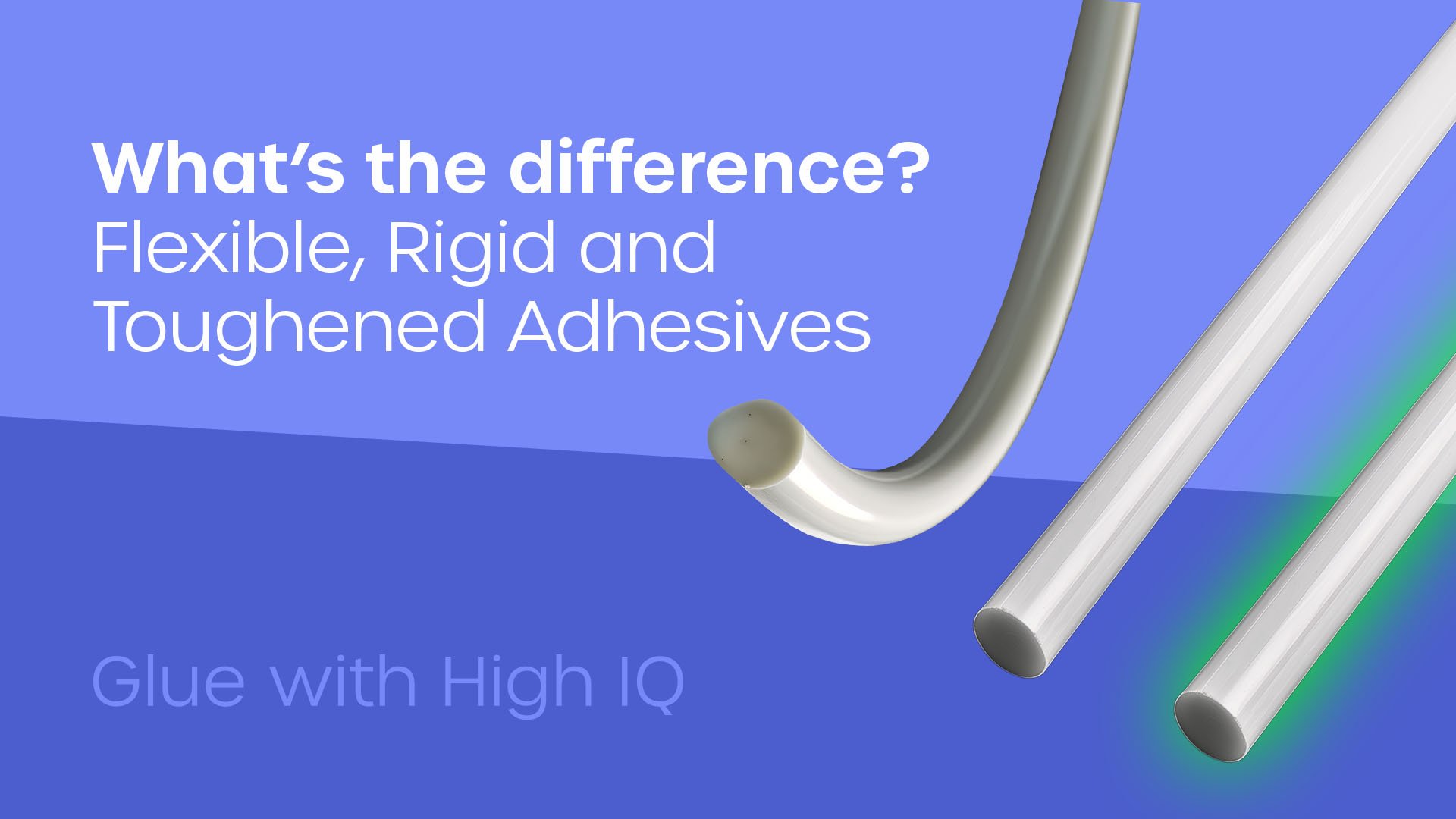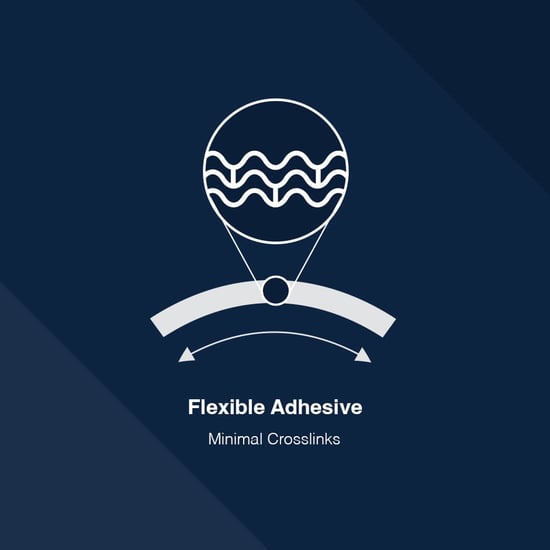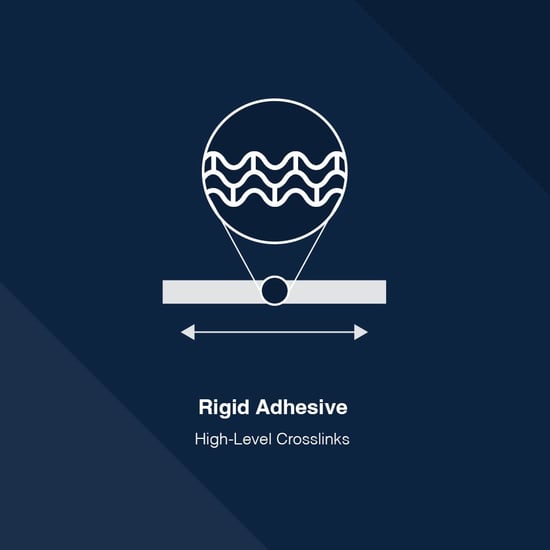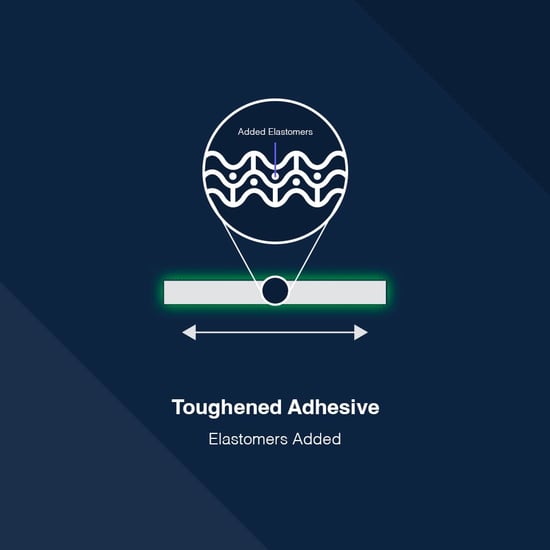Decoding Adhesive Terminology: Analysing the Difference Between Toughened, Flexible, and Rigid Adhesives

There is a lot of terminology used to describe adhesive types. When it comes to selecting the right adhesive for your project, understanding this terminology is crucial. Flexible, rigid, and toughened adhesives are all terms you will encounter when selecting an adhesive. But what do they mean?
We’re here to help you find out. Here at Forgeway, we manufacture a range of different industrial adhesives. We are used to hearing this terminology. We also understand it isn’t. Helping you understand adhesive characteristics is crucial.
This article will discuss the definition of flexible, rigid, and toughened adhesives. We will then analyse the benefits and drawbacks of these adhesive types. By the end of the article, you will understand which adhesive type could suit your needs.
Understanding flexible, rigid, and toughened adhesives
You can’t analyse the benefits and drawbacks before you understand what the different adhesive types mean. The main difference between these adhesive types is the crosslink density.

Let’s explore what this means in detail:
What is a Flexible Adhesive?
Flexible adhesives, as the name suggests, offer a high level of flexibility and elongation. They possess the ability to accommodate movement and deformation without compromising the bond strength over time. Generally, flexible adhesives will have reduced tensile strength.
Tensile elongation is the score that we use to grade an adhesive’s flexibility. Any adhesive with a tensile elongation score above 10% is ‘technically’ flexible. However, the number will change depending on who you ask. We’d say that a high-flex adhesive will have a tensile elongation above 100%.
Flexible adhesives gain their flexibility through having a lower crosslink density.

The crosslink density can be reduced in a number of ways. But one of the most common ways is the incorporation of plasticisers. These plasticisers allow the polymer chains to move and deform under stress, preventing brittle failure
Examples of flexible adhesives include:
- MS Polymers
- One-component polyurethane adhesives
- Some grades of acrylic (or MMA) adhesives.
Common applications for flexible adhesives include where materials are subject to:
- Frequent movement
- Thermal expansion
- Impact and vibration
This typically occurs in structures exposed to varying temperatures or vibrations.

What is a Rigid Adhesive?
Rigid adhesives are stiff and have low flexibility. They are usually very hard and brittle and minimize movement or deformation between bonded materials.
Typically, a rigid adhesive would have a tensile elongation lower than 5%. Tensile elongation refers to how much longer a material will become when stretched.
Rigid adhesives have a high amount of cross-linking. This means the polymer chains are packed tightly together. You will rarely find added plasticizers in a rigid adhesive’s formulation.

Common examples of rigid adhesives include:
- Epoxy adhesives
- Some grades acrylic adhesives
- Cyanoacrylate adhesives.
Rigid adhesives are well-suited for applications that require high structural integrity and stability.
What is a Toughened Adhesive?
We should clarify that you can get some ‘toughened’ versions of flexible and rigid adhesives. This just means that a rigid or flexible adhesive’s formulation has been adjusted to make it ‘toughened.
However, to avoid confusion, we define toughened adhesives in their own category.
Adhesive manufacturers formulate toughened adhesives to absorb impact and stress. They can withstand high dynamic loads and vibrations. Toughened adhesives typically exhibit a certain degree of elasticity.
The increased elasticity allows the adhesive to deform and flex without cracks growing and causing bond failure.
The crosslink density will usually not change with toughened adhesives. However, added toughening materials (like rubber or elastomers) enhances the adhesive’s toughness.

You can get toughened grades of most adhesive chemistries. Epoxy, acrylic, and polyurethane adhesives will all usually have toughened variations.
Toughened adhesives are ideal for applications that involve:
- Thermal cycling
- Dynamic Forces
- Impact
These factors are common in the automotive and aerospace industries.

Advantages and Disadvantages of Toughened, Flexible, and Rigid Adhesives
Each type of adhesive—toughened, flexible, and rigid—comes with its own set of advantages and disadvantages. Choosing the best adhesive for your application is crucial to bonding success. Make sure you understand these characteristics to help you.
Let’s explore the pros and cons of each adhesive type:
What are the Pros and Cons of Flexible Adhesives?
Pros of Flexible Adhesives
- High flexibility and elongation capability, allowing for movement and deformation without bond failure.
- Good peel strength and resistance to vibration and fatigue.
- Suitable for bonding materials with different coefficients of thermal expansion.
Cons of Flexible Adhesives
- Lower tensile strength compared to rigid adhesives.
- Less suitable for applications with high temperatures.
- Reduced chemical resistance.
Go Deeper
What are the Pros and Cons of Rigid Adhesives?
Pros of Rigid Adhesives
- High shear and tensile strength. This provides structural stability and integrity.
- Often will have increased heat and chemical resistance. This is particularly the case with epoxy adhesives.
- Generally have lower ‘creep’ than other adhesive types.
Cons of Rigid Adhesives
- Lack of flexibility makes them prone to bond failure under dynamic loads or peel forces.
- Brittle nature can lead to cracking or failure under impact.
- Not suitable for bonding dissimilar materials with different coefficients of thermal expansion.
What are the Pros and Cons of Toughened Adhesives?
Pros of Toughened Adhesives
- Excellent impact resistance and durability. Toughened adhesives are ideal for applications subjected to mechanical stress or vibrations.
- Enhanced elasticity. This helps to withstand peel forces and dynamic loads without compromising the bond.
- Can absorb energy and prevent cracks or fractures from spreading.
- Suitable for bonding dissimilar materials with different coefficients of thermal expansion.
- Often has high tensile strength and greater chemical and heat resistance than flexible adhesives.
Cons of Toughened Adhesives
- May have lower shear strength compared to rigid adhesives.
- Can be more expensive due to the incorporation of toughening agents.
Selecting the right adhesive for your application
Understanding the differences between toughened, flexible, and rigid adhesives helps you pick the perfect adhesive for your project. It’s not easy to understand the differences. Now you’ve read the article, you should have a better idea of what they mean.
Selecting an adhesive is not easy though. You need to think about more than just the flexibility, rigidity and toughness. You must evaluate several factors to ensure a strong and durable bond.
Here at Forgeway, we’ve been helping companies choose the perfect adhesive for them. We’ve created a quiz which will help you narrow down your choices to find the right adhesive type.
The product selector will save you time and ensure an accurate selection that matches your project. Take the quiz below and receive a recommendation in 45 seconds.
Remember, the adhesive selection is crucial for reliable and long-lasting bonds. You must get it right.
If you would prefer the help of an adhesive expert, a member of our team would be happy to help. Don’t let resistance to change get in the way of bonding success.
Whether you want to get in touch or you would prefer to research yourself, we hope this article helped you understand the differences between flexible, rigid, and toughened adhesives.
By reading this article, you’re one step closer to finding the exact adhesive type for your needs.
Thomas is the Content Manager here at Forgeway. Thomas' job is to translate the technical jargon from the ivory tower of academia into easy-to-read content that everyone can understand. Forgeway's mission is to answer every question our customers and prospective clients ask, or are apprehensive to ask.



